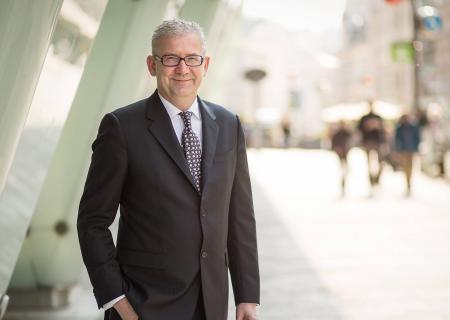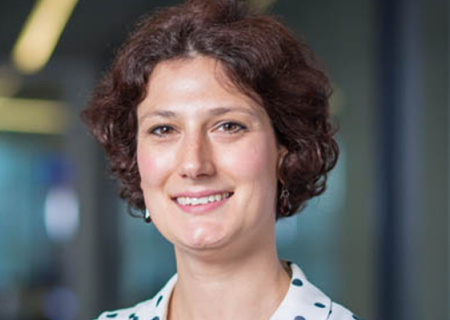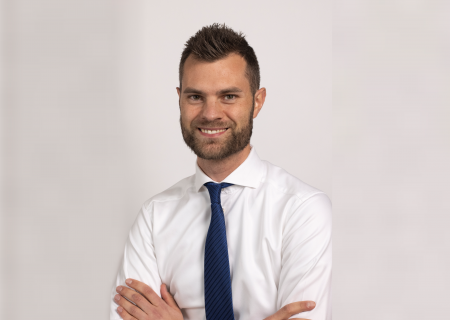Entering the Field
Bertrand Julien-Laferrière focuses on the heart of Europe
Bertrand Julien-Laferrière, Head of Real Estate at Ardian, one of the world’s largest direct investment firms with more than €60 billions of assets under management, spoke to IQ about the organisation’s move into the non-listed real estate investment business.
Ardian opened their real estate department in 2015, following a long history in equities, infrastructure and direct investment, which went under the name of AXA Private Equity, before they became independent in September 2013.
The company’s direct investment activities have always focused on France, Germany and Italy, and its foray into the real estate sector is following this pattern. ‘The intention was very much to appeal to our existing client base, who have a significant real estate allocation and interest in the Eurozone,’ Bertrand explained. ‘We were aware that many wanted to have an exposure to the asset class, and we wanted to use our existing infrastructure, market presence and brand reputation to make this possible. We see direct investment in real estate as overwhelmingly locally-driven, so we’ve now established teams on the ground in Paris, Frankfurt and Milan.’
‘The first fund that we have launched focuses on offices in the major French, German and Italian cities. Its strategy is value added, meaning that we are targeting assets that will benefit from operational input – either due to vacancy and the potential for restructuring leases, or from refurbishment or repositioning. The first investments by the fund were a building close to the Expo site in Munich, and a portfolio of six properties in Milan and Rome. It’s important that the assets are in good locations and well connected, but we want to do deals that are either off-market or where the competition is limited. The fund is designed to appeal to our existing investors, typically insurance companies and pension funds, though also some high net worth individuals as well.’
We see direct investment in real estate as overwhelmingly locallydriven, so we’ve established teams on the ground in Paris, Frankfurt and Milan.
The markets Ardian’s fund is targeting – in particular offices in France and Germany – have been identified by INREV’s latest Investment Intentions Survey as two of the most popular country-sector combinations for investors at the moment. ‘That doesn’t surprise me,’ says Bertrand, ‘though they may be considering some of the more provincial cities as well as the metropolitan centres – and it’s in the latter where we see the stronger economic growth prospects, particularly in the case of Paris and the top five German cities. The Paris market is very active at the moment, with many foreign investors, such as the Koreans, targeting core assets in traditional locations, and yields have been bid very low (see View from Asia on page 25). This has pushed some domestic institutional investors to look at more operationally intensive assets, where they may not always price the risks attached to them.’
Nevertheless, as long as they are careful about what they buy, he believes that investors can expect reasonable returns from these types of location going forward. ‘The gap between real estate and bond yields is still big enough to justify these investments. They may not see too much more yield compression, but I don’t expect them to move too far the other way either. If interest rates rise in the eurozone, these rises are likely to be partly absorbed by the current wide spread and partly by rent increases tied to inflation. At the same time, I don’t expect the ECB to be raising interest rates dramatically in the near future.’
Bertrand is also relatively philosophical about the potential likelihood of further political upheavals around Europe and the impact they might have. ‘In France 75% of the people say they don’t want to leave the Euro, and that’s significant. I have a suspicion that the core European nations may actually start to pull together now rather than moving apart.’
The core European nations may actually start to pull together now rather than moving apart.
Turning to the wider real estate scene, he believes that technological change could well be a key driver for office markets in the future. ‘We have already seen a big impact from digitalisation on the retail and logistics sectors, as well as in the residential and hotel sectors with Airbnb, but it is also starting to bring a demand for greater flexibility from the occupiers of office space. Companies like WeWork have begun to provide flexible co-working solutions, but I think the real challenge will be to allow for a mix of longer-term and shorter-term lettings within the same buildings. Landlords have always tended to believe their interest lies in keeping leases as long as possible, so embracing this kind of flexibility will mean a step change, but ultimately it may be inevitable.’
Discussing this kind of big theme is one area where Bertrand sees INREV as being particularly valuable for organisations like Ardian, which are entering the real estate fund business for the first time. ‘INREV is a great platform for setting standards and bringing people in the non-listed real estate business together and learning from each other,’ he says. ‘In particular it helps us understand better what investors are looking for and the direction in which the non-listed business is heading. It also provides a lot of information, benchmarks and guidance on best practices which are very valuable for people like us.’








